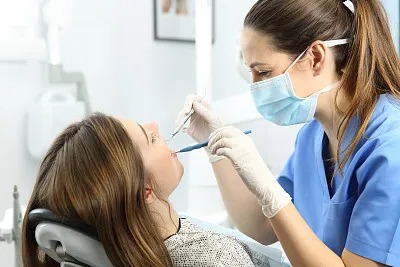The Process and Reasons Behind Extracting a Tooth for Dental Health and Comfort
Summary: Tooth extraction is an essential dental procedure that can significantly improve a patients health and comfort. This article explores the various processes involved in extracting a tooth, the reasons behind this decision, the impacts of extraction on overall dental health, and the post-extraction care necessary for optimal recovery. By understanding these facets, patients can better appreciate why extraction is sometimes necessary and how it plays a crucial role in their dental health journey. Throughout the article, we provide important insights on both the surgical process and the reasons to consider tooth extraction, emphasizing how it can lead to a healthier and more comfortable dental experience.
1. Understanding the Tooth Extraction Process

The tooth extraction process typically begins with a thorough examination by the dentist, who will assess the tooths condition through X-rays and visual inspection. This initial evaluation is crucial for determining the complexity of the extraction, whether it’s a simple removal of a visible tooth or a surgical extraction of an impacted tooth. The dentist will explain the procedure to the patient, addressing any concerns or questions they may have, thereby ensuring the patient feels comfortable and informed.
Once the evaluation is complete, the extraction procedure can commence. For simple extractions, the dentist will administer a local anesthetic to numb the area surrounding the tooth, ensuring that the patient feels minimal pain. In cases where surgery is required, general anesthesia may be used. The dentist then carefully loosens the tooth from the socket using specific tools before gently removing it, taking care to minimize trauma to the surrounding gums and bone.
After the tooth is removed, the dentist will clean the extraction site and may place gauze to manage bleeding. Instructions for care post-extraction will be given to the patient, emphasizing the importance of following these to promote healing and prevent complications. Overall, the extraction process is designed to be as pain-free and efficient as possible, focusing on the wellbeing of the patient.
2. Reasons for Tooth Extraction in Dental Health
Tooth extraction may be necessary for various reasons, often primarily focused on the overall health of the patient. One of the most common reasons is severe tooth decay that cannot be repaired through fillings or other dental treatments. When a tooth is beyond saving, extraction is typically the best option to prevent further health issues, such as infections that can spread to other teeth and the surrounding gums.
Another significant reason for extraction is periodontal disease. This condition affects the supporting structures of the teeth, leading to gum inflammation and, potentially, tooth loss. When a tooth becomes loose due to the resorption of bone caused by severe gum disease, extraction can prevent further complications and preserve the health of adjacent teeth.
Impacted teeth, particularly wisdom teeth, also frequently require extraction. These teeth may become stuck in the jawbone or gums, leading to pain, swelling, and potential infection. Extracting impacted teeth can alleviate these symptoms and prevent future dental issues, thereby promoting better oral health.
3. Impact of Extraction on Overall Dental Health
Extraction can have a profound impact on overall dental health. While it may seem counterintuitive to remove a tooth, the procedure can be beneficial in preventing future complications. For instance, removing a decayed or infected tooth can hinder the spread of bacteria, thus safeguarding other teeth from potential decay or loss.
Moreover, tooth extraction can create space in the mouth, reducing crowding and allowing for better alignment of remaining teeth. This improved alignment can lead to enhanced bite functionality, reducing the risk of further dental problems, such as jaw pain or temporomandibular joint (TMJ) disorders.
Furthermore, once a harmful or problematic tooth is removed, it allows for better oral hygiene practices. With fewer teeth to clean, patients may find it easier to maintain an effective oral care routine, which can lead to healthier gums and teeth in the long term.
4. Post-Extraction Care for Optimal Recovery
Caring for the mouth following tooth extraction is crucial for ensuring a smooth recovery. After the procedure, patients should follow specific guidelines provided by their dentist. This often includes applying gauze to the extraction site to manage bleeding and biting down gently for a designated period.
Patients are usually advised to avoid certain foods and activities for a few days post-extraction. Soft foods are often recommended initially, while hard, chewy, or spicy foods should be avoided to prevent irritation of the extraction site. Additionally, patients should abstain from smoking or using straws, which can create suction and disrupt the healing clot.
Monitoring for signs of complications is also essential. Symptoms such as prolonged bleeding, severe pain, or swelling should be reported to a dentist promptly. Following all post-extraction instructions will help ensure optimal healing and comfort for the patient.
Summary:
In summary, tooth extraction can be a significant aspect of maintaining dental health and comfort. By understanding the extraction process, the reasons behind it, its effects on overall dental health, and the necessary post-care, patients can take informed steps towards improving their oral health. This knowledge can alleviate fears associated with the procedure while promoting a healthier dental future.
This article is compiled by Vickong Dental and the content is for reference only.



